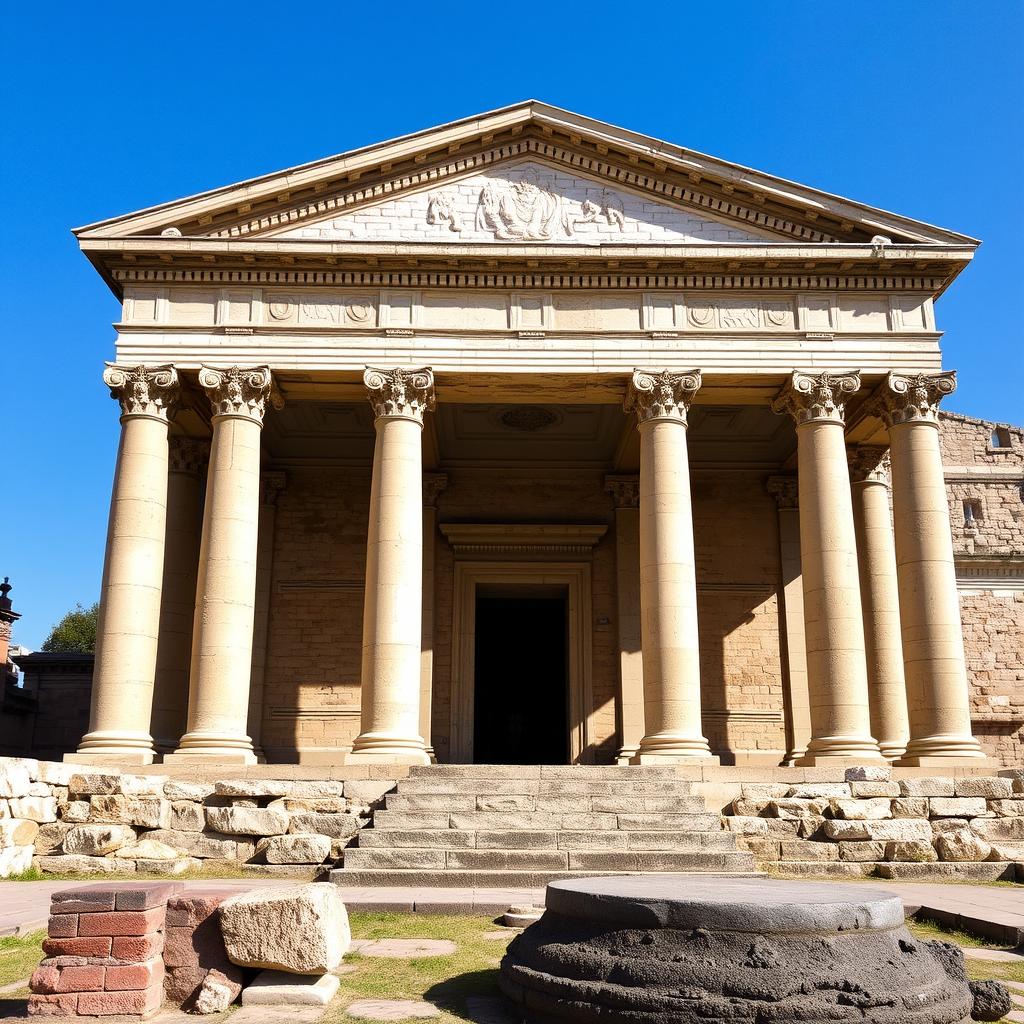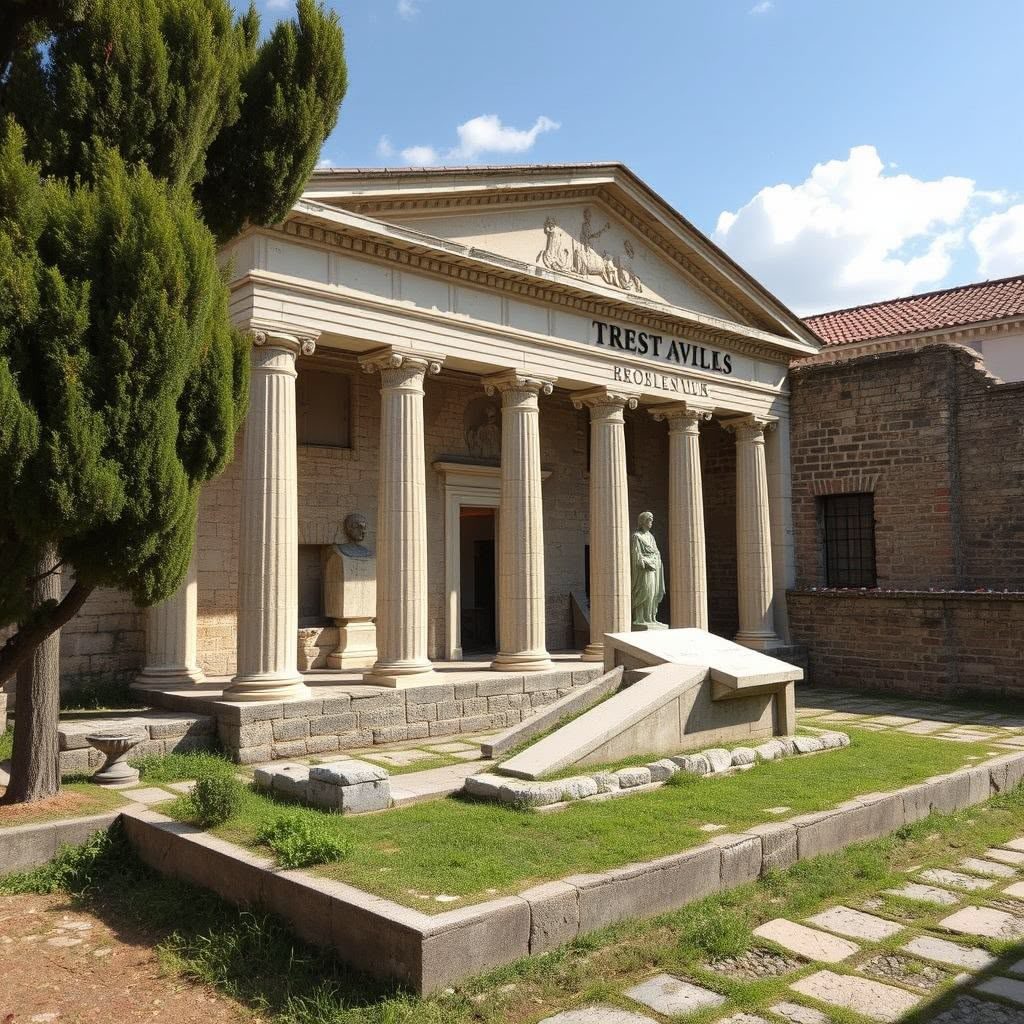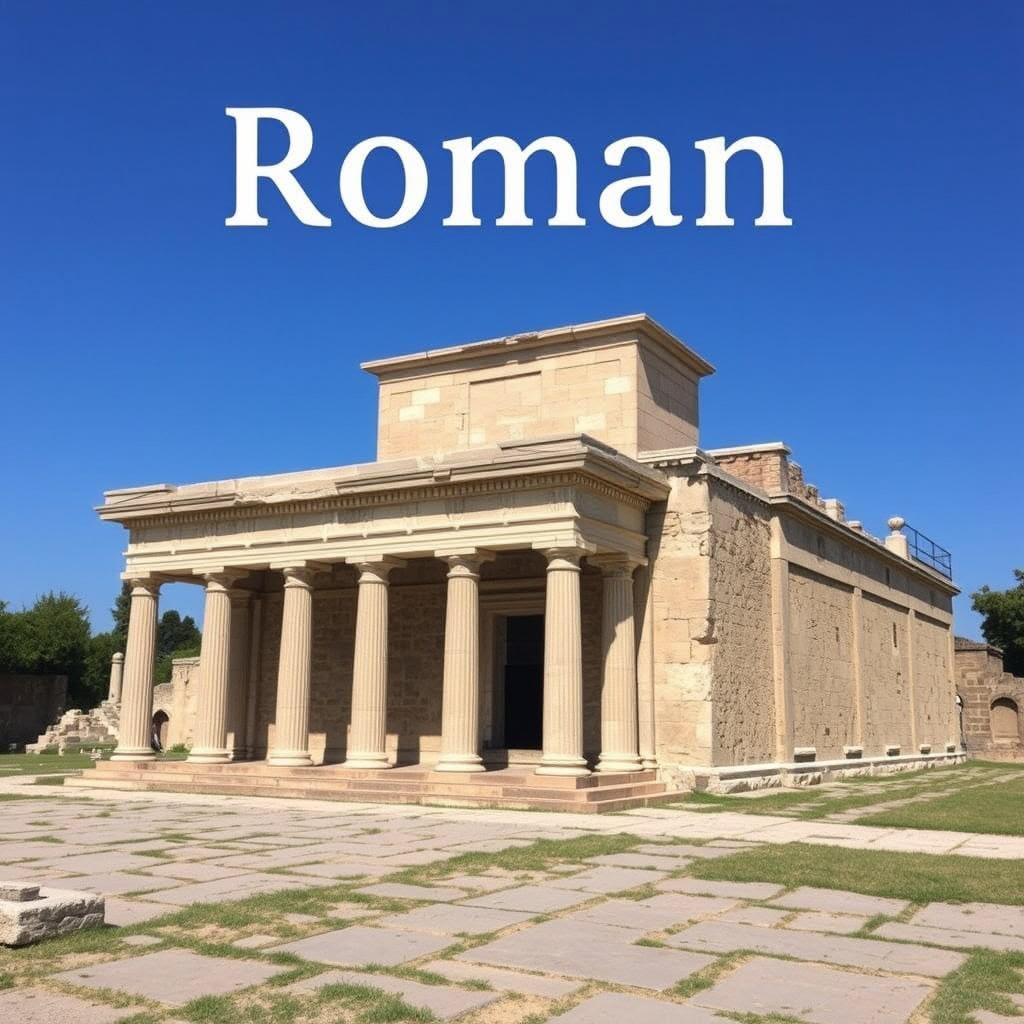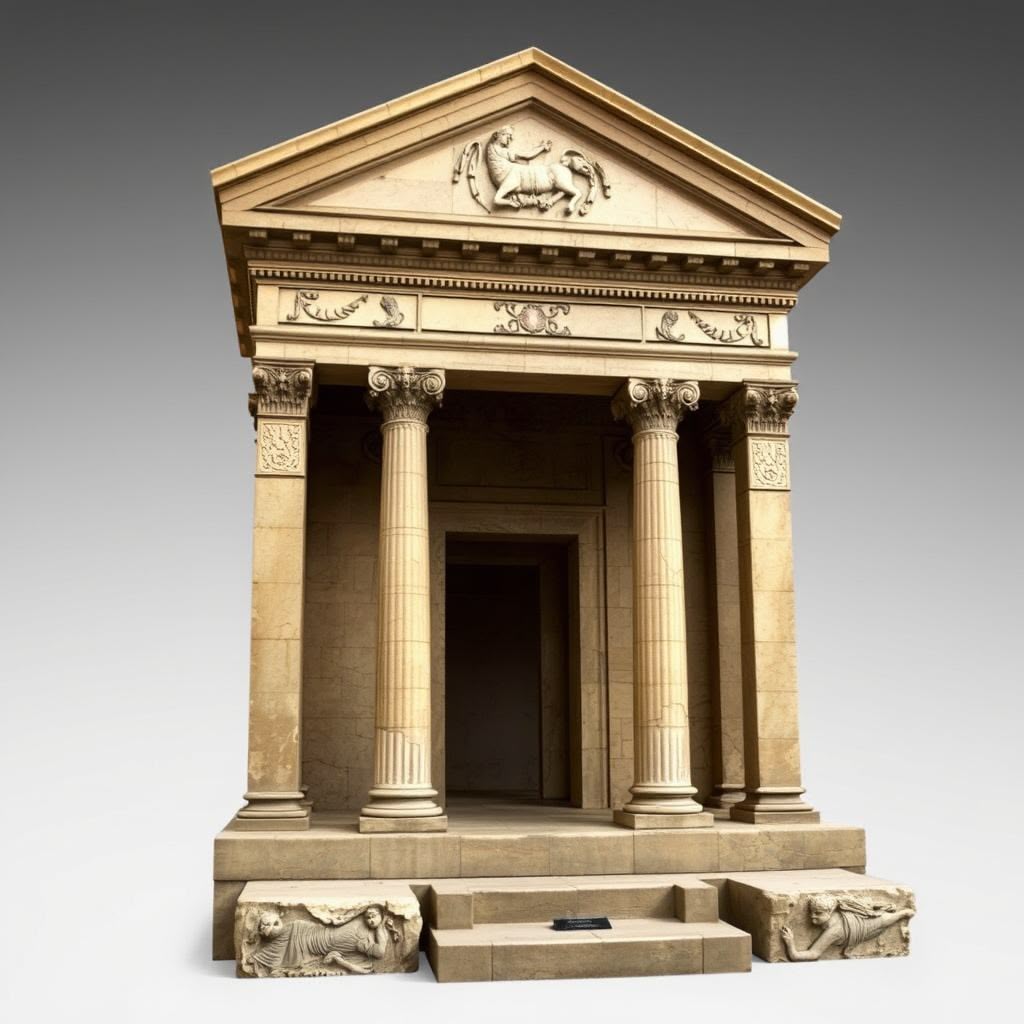In the rich history of Ancient Rome, honoring the dead held immense importance in both cultural and religious aspects. The ways Romans remembered their deceased reveal intricate social structures, spiritual beliefs, and family values. Tombs, mausoleums, and monuments served not only as burial sites but also as lasting representations of identity, memory, and status.
Key features of Roman funerary practices include:
- Construction of elaborate tombs and mausoleums by wealthy families
- Placement of burial sites outside city walls along main roads
- Use of funerary art such as sarcophagi and inscribed altars to commemorate lives
- Rituals involving offerings, public ceremonies, and visits to the dead
Understanding Tombs, Mausoleums, and Monuments: Honoring the Dead in Roman Society unveils how these structures acted as concrete connections between the living community and their ancestors. They safeguarded personal legacies while strengthening social order across generations.
Evolution of Burial Practices in Roman Society
Burial practices in Roman society underwent significant evolution, reflecting changes in social norms and religious beliefs. Key aspects to consider include:
1. Necropolises: The Cities of the Dead
Romans established necropolises outside city walls, creating sacred spaces for burial. These “cities of the dead” showcased a blend of architectural styles and served as a testament to the community’s reverence for the deceased.
2. Cremation vs. Inhumation: Varied Funerary Rituals and Their Significance
During the mid-Republic era, cremation was the predominant method of disposing of bodies, symbolizing purification and transition to the afterlife. In contrast, the Imperial period witnessed a shift towards inhumation, emphasizing continuity and respect for the physical form. This transition in burial customs highlights the dynamic nature of Roman funerary practices, influenced by cultural shifts and religious ideologies.
The influence of Roman roads, which served as vital arteries for trade and communication, cannot be overlooked. These roads facilitated not just economic growth but also allowed for the spread of diverse cultural practices, including those related to funerary customs.
Moreover, Roman engineering feats played a significant role in shaping these burial practices. The construction of elaborate tombs and necropolises required advanced engineering skills that were characteristic of this era.
Additionally, the societal structure during this period was complex, with various roles such as that of gladiators influencing public perception and cultural norms. These warriors, often viewed through a lens of admiration or pity, were a reflection of the societal values at play.
Lastly, the artistic expressions seen in ancient Roman art, which heavily influenced burial practices through sculptures and mosaics found in tombs, further illustrate how intertwined these customs were with broader cultural trends.
The tombs constructed during this period serve as a historical record of these evolving practices, revealing insights into the beliefs and values of Roman society.

Architectural Diversity in Roman Tombs and Mausoleums
Roman society demonstrated remarkable variety in its funerary architecture, reflecting differences in social status, religious beliefs, and regional influences. Two prominent forms stand out: mausoleums and catacombs.
Mausoleums: Monumental Structures of Remembrance
Mausoleums served as grand, above-ground memorials designed to immortalize individuals or families. These structures ranged from simple, rectangular tombs to elaborate multi-storied buildings resembling small temples or houses. Wealthy Romans, often part of the patrician class, invested heavily in mausoleum construction to display their prestige and ensure lasting remembrance.
Key Features of Mausoleums
- Often positioned along busy roads outside city walls for maximum visibility.
- Incorporated architectural elements like columns, pediments, and sculptural reliefs.
- Interiors sometimes contained multiple burial chambers or niches for ashes.
- Example: The Mausoleum of Augustus stands as a testament to imperial power and familial legacy.
These monumental tombs communicated messages about identity and social rank. They also hosted funerary ceremonies and became focal points for family gatherings during commemorative festivals.
Catacombs: Underground Burial Sites with Unique Features
Catacombs represent a distinct category of burial sites, primarily associated with early Christian communities but also used by other groups. These underground cemeteries featured labyrinthine tunnels carved into soft rock beneath the city outskirts.
Significance of Catacombs
- Provided safe, consecrated space for inhumation during periods when above-ground burials were restricted.
- Walls lined with loculi—small niches carved to hold individual bodies or urns.
- Decorated with frescoes, inscriptions, and symbolic motifs expressing faith and hope in the afterlife.
- Served not only as burial places but also as clandestine worship sites during times of persecution.
The catacombs’ subterranean environment contrasted sharply with the imposing presence of mausoleums above ground. Together, these architectural forms reveal the diversity of Roman attitudes toward death—from public display to private devotion—offering insight into evolving cultural practices surrounding mortality.
This architectural diversity is not just limited to tombs and mausoleums; it extends to other aspects of Roman architecture, which are considered masterpieces of ancient engineering.

Sarcophagi, Ash Chests, and Urns: Exploring Funerary Art in Roman Culture
Roman funerary art played a crucial role in expressing identity and commemorating the deceased. Sarcophagi, ash chests, and urns were not merely containers for bodies or ashes; they stood as powerful symbols reflecting social status, personal achievements, and family heritage.
The Significance of Sarcophagi
Sarcophagi were especially significant in Tombs, Mausoleums, and Monuments: Honoring the Dead in Roman Society. These stone coffins featured intricate carvings that often illustrated mythological scenes, heroic exploits, or portraits of the deceased. Such imagery served multiple purposes:
- Personal legacy: Highlighting virtues, career milestones (like those achieved by notable figures such as Scipio Africanus, a significant figure in Roman history), or divine favor.
- Cultural storytelling: Integrating popular myths to connect individuals with timeless narratives.
- Visual identity: Displaying clothing styles, hairstyles, or attributes that identified social rank or profession.
The Role of Ash Chests
Ash chests held cremated remains and were commonly placed inside mausoleums or family tombs. These chests frequently bore inscriptions and relief decorations that personalized the memorial. The artistry on ash chests combined functional use with commemorative expression by:
- Recording names and family ties.
- Depicting symbolic motifs like wreaths or garlands representing victory over death.
- Including epitaphs that conveyed sentiments of love, honor, or grief.
The Meaning Behind Urns
Urns were more modest but equally meaningful vessels. Their shapes and decorative elements varied widely—from simple pottery to finely crafted bronze works. Urns allowed families to maintain bonds with the deceased through rituals such as:
- Placement in columbaria (urn houses) within necropolises.
- Participation in annual commemorations where offerings were made.
The diversity of Roman funerary art reveals a society deeply invested in preserving memory through material culture. Each sarcophagus, ash chest, or urn functioned as a lasting testament to the individual’s life and place within the broader fabric of Roman tradition.
This rich cultural tapestry was influenced by various sectors including agriculture which was a crucial driver of Rome’s economic growth as detailed in our piece on the role of agriculture in Roman economic growth. Furthermore, the religious practices of the Romans intertwined with every aspect of their lives influencing politics, culture, and social structures as explored in our article on ancient Roman religion. The military might of the Roman Army also played a crucial role in shaping the empire’s growth and upkeep.
In contemporary times, these historical explorations have found their way into virtual realms such as Second Life, where users can immerse themselves in role-playing games set in ancient Rome.

Religious Beliefs Surrounding Death and Burial in Roman Society
Roman attitudes toward death combined reverence and fear of the dead. The deceased held a complex position: honored ancestors who protected the living, yet potentially dangerous if neglected or offended. This duality shaped many burial customs and religious practices.
The Role of Cults of the Dead
Cults of the Dead played a central role in maintaining ties between the living and their ancestors. Families observed rituals to appease spirits, ensuring they remained benevolent rather than restless. These rites included offerings of food, drink, and incense at tombs during festivals such as the Parentalia and Lemuria. These ceremonies reaffirmed family bonds across generations.
Burial Laws and Public Health
Burial laws reflected this respect for the dead while addressing public health and urban order:
- Bodies were not permitted inside city limits except for emperors or notable figures.
- Tombs and mausoleums lined roads outside cities, creating necropolises visible to passersby.
- Regulations ensured gravesites were maintained properly to prevent spiritual unrest.
Fear of Malevolent Spirits
The fear aspect emerged from beliefs that improper burial or neglect could result in malevolent spirits causing harm. This fear reinforced strict funerary protocols. Professional undertakers and burial societies ensured rituals were performed correctly, reflecting both religious devotion and social responsibility.
Symbolism in Funerary Practices
Religious symbolism often featured on monuments reinforced these beliefs. Images of protective deities like Charon or Dii Manes symbolized safe passage to the afterlife. Funerary inscriptions invoked blessings for peaceful rest or warned against disturbing the tomb.
Women’s Influence on Rituals
Interestingly, the legal status of Roman women also intertwined with these rituals, as women’s rights and restrictions significantly influenced gender dynamics in ancient Rome, including aspects related to death and burial rites.
Legacy on Modern Legal Systems
Moreover, these ancient practices have left an enduring legacy on modern legal systems, as seen in the influence of the Corpus Juris Civilis, a comprehensive codification commissioned by Emperor Justinian I that preserved ancient Roman legal principles while adapting them to contemporary society.
Roman religious views intertwined with daily life through these rites and laws, preserving a delicate balance between honoring ancestors and protecting the living community. Furthermore, the rich tapestry of Roman mythology has also had a profound impact on modern culture, reflecting the societal norms and political aspirations of ancient Rome.
Example: Tuvixeddu Necropolis in Sardinia
Tuvixeddu Necropolis in Sardinia is an important archaeological site that shows the blending of Punic and Roman burial traditions. This necropolis, located near the city of Cagliari, provides a unique opportunity to see how different cultures influenced each other in tomb architecture. Here are some key points to consider:
1. Cultural Syncretism
Tuvixeddu Necropolis showcases a blend of Punic and Roman burial practices, reflecting the island’s historical ties with both civilizations. The site’s tombs and monuments embody a harmonious integration of different cultural elements.
2. Architectural Features
The funerary structures at Tuvixeddu exhibit a mix of styles, incorporating elements such as rock-cut chambers, columbaria, and chamber tombs. These architectural designs illustrate the evolution and adaptation of burial customs over time.
3. Symbolism and Iconography
The grave goods found within the tombs, including pottery, jewelry, and votive offerings, reveal symbolic motifs that hold significance in both Punic and Roman belief systems. These artifacts provide valuable insights into the religious and funerary practices of the ancient inhabitants.
4. Historical Context
By exploring Tuvixeddu Necropolis, researchers can gain a deeper understanding of how cultural exchange and syncretism shaped burial traditions in ancient Sardinia. The site serves as a testament to the interconnectedness of civilizations and the rich tapestry of influences that defined funerary art in the region.
The Tuvixeddu Necropolis stands as a testament to the enduring legacy of cross-cultural interactions in Roman society, offering a compelling narrative of shared traditions and artistic expressions in honoring the dead. This is particularly interesting when considering the social class divide in Ancient Rome, which greatly influenced daily life, traditions, and even burial practices among different social classes.

Conclusion
Tombs, mausoleums, and monuments in Roman society are lasting symbols of memory. They represent more than just places of burial; these structures convey social status, individual identity, and religious devotion. Their significance as symbols of status in death emphasizes how Romans aimed to uphold their legacy and assert their importance even after death.
These memorials provide valuable insights into ancient Roman beliefs about death, remembrance, and the afterlife. They serve as a reminder that honoring the deceased was an integral part of Roman identity—creating a lasting legacy through stone, art, and ritual that still resonates today.
This legacy extends beyond the past and has had a profound impact on Western civilization, influencing politics, culture, and society in ways that continue to resonate today.
The story of Rome is not solely one of conquest and expansion; it also encompasses innovation, culture, and governance that have left an indelible mark on the world. As we explore ancient Rome, we uncover layers of history that reveal the rise and fall of this mighty empire—a tapestry woven from diverse cultures, languages, and traditions.
Furthermore, philosophical currents such as Stoicism that emerged during this period have further shaped Roman thought and culture.

